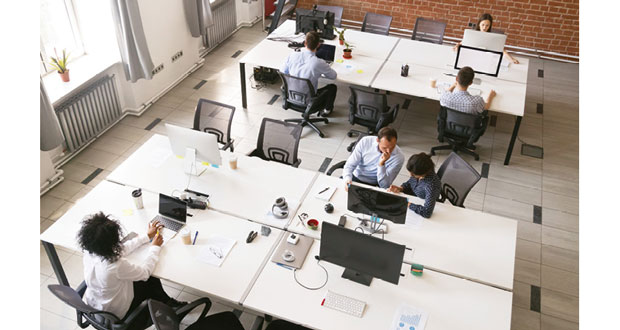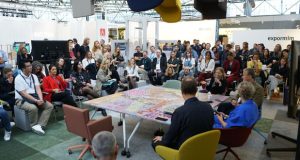 The world of work may be changing but the physical office is here to stay, it’s up to us how we use it, writes Sam Addison, Head of Project Management at Colliers real estate
The world of work may be changing but the physical office is here to stay, it’s up to us how we use it, writes Sam Addison, Head of Project Management at Colliers real estate
The global pandemic necessitated, and accelerated, a huge shift in our working habits. The case for effective remote working was successfully proven and a new reality of hybrid work was embraced.
But what does that now mean for our physical offices and the role they formerly played in supporting and promoting cultural cohesion and growth in our organisations?
The fact is, we are still in the midst of an intense period of transformation – both for our workforce and the workplace. The pandemic certainly played its part, but macro-economic uncertainty, technological change and evolving employee expectations have left our organisations in a state of flux.
In many ways, it’s too soon to know exactly how things will play out – but we can see the direction of travel. The office is definitely here to stay; it will just be used and occupied differently.
REMAINING AGILE
In my role, I speak to and work with a broad array of organisations: helping them to understand what they want from their physical workspace and how it can be best deployed to meet both their commercial and people needs.
We’re seeing a real shift towards an agile office strategy: shorter tenancy leases to buy time while organisations assess just how much space they might need in the short to medium term, and creative design concepts that will allow their workspace to flex with them as business needs evolve.
This underpinning flexibility is now seen as core to the employee proposition. It has become expected. As the competition for talent gets fiercer, an agile workplace strategy in a vibrant and adaptable workspace can prove the differentiator in winning, developing, and retaining talent.
ALIGNING CORPORATE AND TALENT VALUES
For many workers at the earlier stages of their career, the physical office still plays a critical role in providing opportunities to interact with peers and ‘learn on the job’. They know that time spent observing and collaborating can have a significant impact on their future performance.
More than that though, workers now want to know that it’s not just their professional aspirations that mesh well with their organisation of choice. An organisation’s vision and values have become decisive factors when evaluating employers, with ESG and DEI as an important a consideration for prospective employees as compensation and work-life balance.
FOSTERING EMPLOYEE ENGAGEMENT
Technology that enhances the workplace experience is another area of intense focus. I’ve seen some companies tap into tech to monitor their workforces’ growing environmental awareness and help employees measure – and reduce – their personal carbon footprint.
All of the organisations that I speak with have sustainability aspirations, and it’s encouraging that environmental matters are now front and centre. Ultimately, it’s about creating spaces that are sustainable and support occupants’ wellbeing and then factoring in those considerations from the get-go.
REIMAGINING THE ROLE OF THE WORKPLACE
In a hybrid work culture, structuring inclusive workspaces to support different needs and foster spontaneous dynamic interaction is the only real way to encourage people to come back to the office, and to stay.
The fact is that the office is now less a place where people to come to complete solo work – they can do that at home – and more a platform that facilitates effective collaboration. This can mean anything from two people teaming up for a project to an all-hands town hall. Going to the office is now ‘intentional’; somewhere you go for a reason, not just to work with your head down or sit on Zoom.
Creating this ‘buzz’, this sense of proactive and productive destination, can be an act of imagination as well as research and planning. I’m seeing huge changes in workplace design with a clear shift from fixed workspace to collaborative, with collaborative now up 60-70 per cent.
That then drives different approaches in how we construct that space, because we want to make sure that the furniture, technology, and mechanical and electrical installations are flexible.
To support this vision there is a real trend towards smaller, more modular work settings that can be quickly adapted to serve different functions and the needs of the organisation. Any uncertainty about future headcount or user type can be accommodated by designing the space to be more adaptable. Buildings can also be internally zoned in ways that reflect different styles of work, with some dedicated to collaboration, others designated as quiet areas and soundproof booths available for calls.
At the end of the day, this doesn’t need to be an expensive or hugely disruptive process. Many of the employers with whom I work are already choosing to reset their offices, using existing fixtures, to inexpensively increase collaboration space and buy time while they understand how their people want to work.
The office is here to stay; how it works for your business is really up to you.





